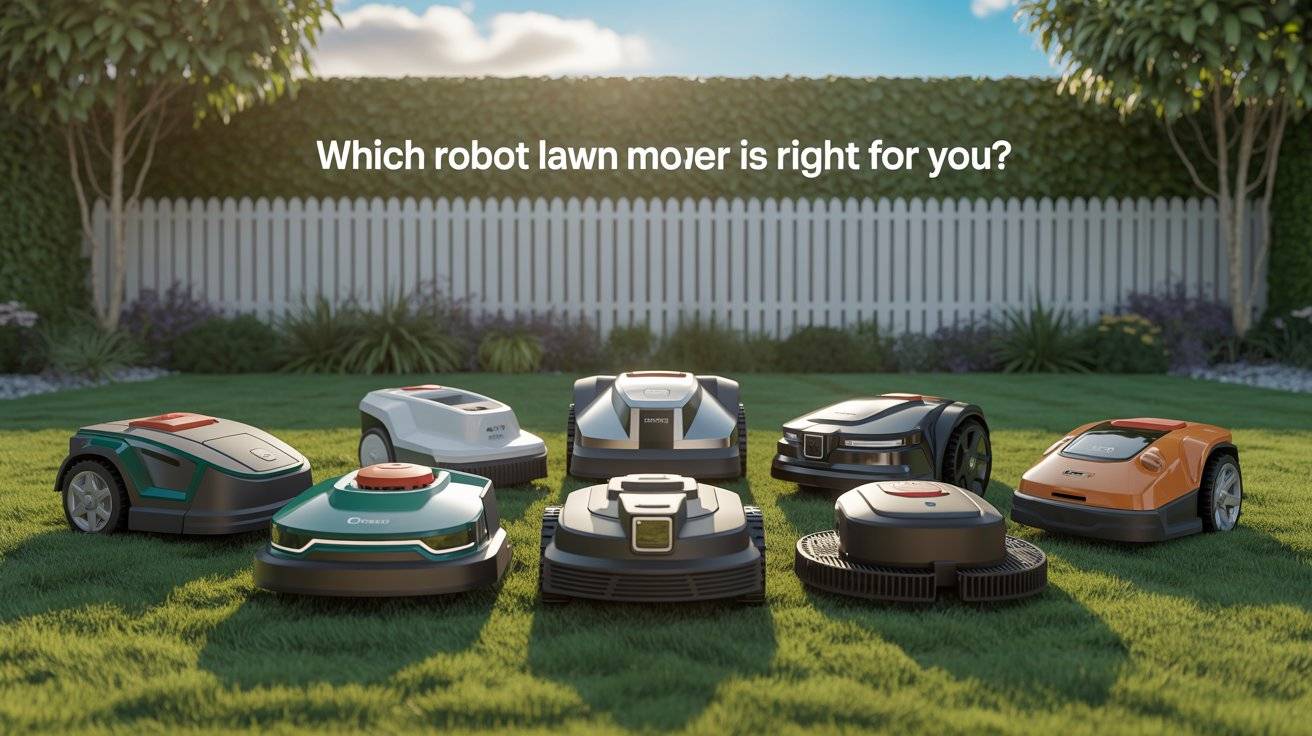Mowing the lawn is one of those chores that most homeowners have to face especially during growing seasons when grass seems to sprout overnight. Robot lawn mowers are designed to handle this task automatically, saving you time and energy. But not all robot mowers are the same.
Some models are best for simple, flat lawns. Others are built to handle hills, curves, or even multiple lawn sections. Some need boundary wires, while others use GPS to know where to go. And while nearly all of them are quiet and energy-efficient, choosing the right type for your yard can make all the difference.
This guide breaks down the six most common types of robot lawn mowers and what kind of lawn each is best suited for. Whether you’re managing a small backyard or a larger, more complex property, this comparison will help you make an informed choice based on real features, not marketing buzz.
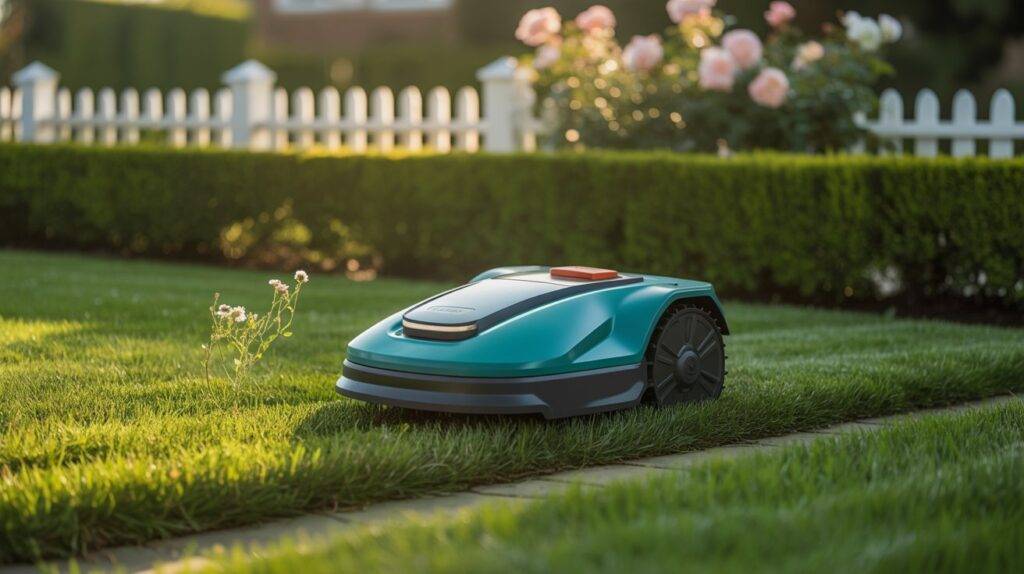
1. Boundary Wire Robot Lawn Mowers
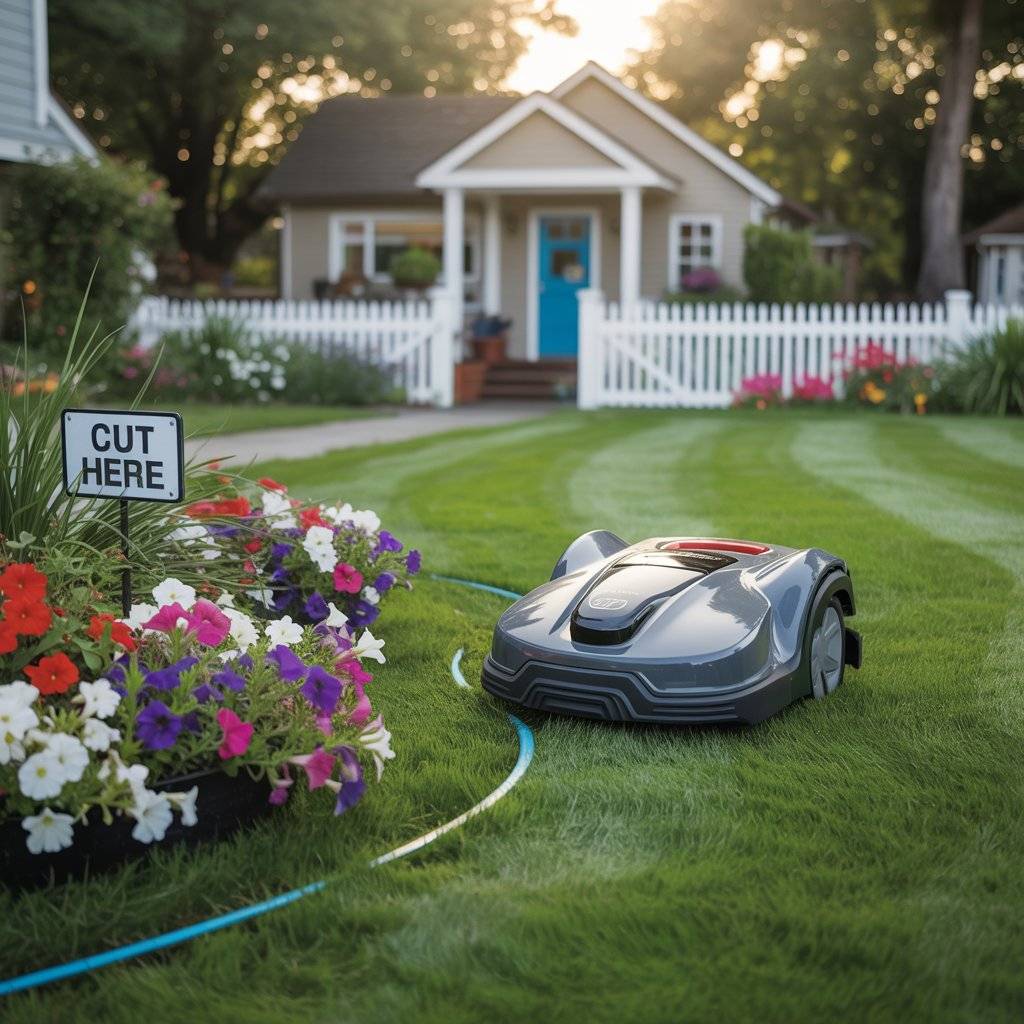
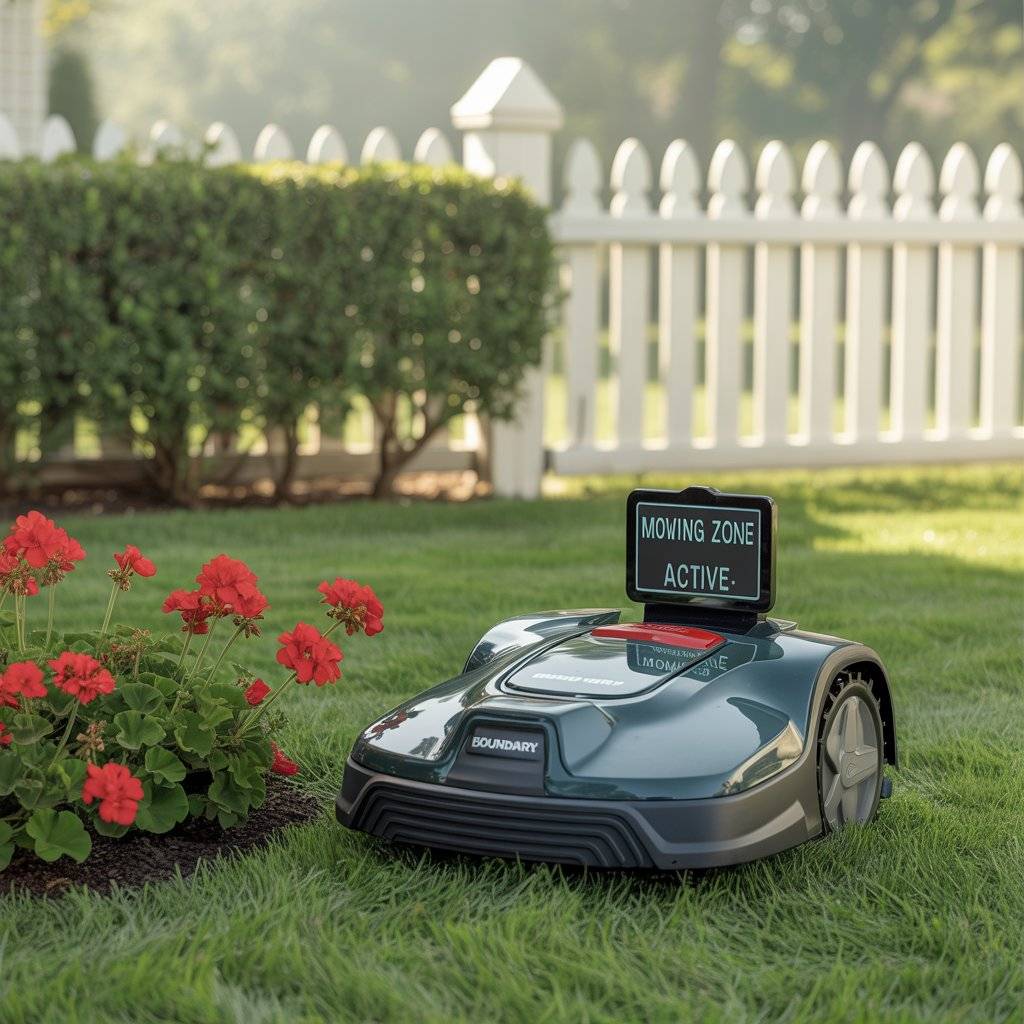
Boundary wire mowers are the most common type on the market. They work by following an electric signal sent through a wire that you install around the edge of your lawn.
The wire tells the mower where it can and cannot go. Most people bury the wire a few inches underground or tack it down with lawn staples.
These mowers are great for typical suburban yards, especially those that have clear boundaries, flower beds, or other landscaping features.
They’re reliable, and once the wire is in place, the mower operates on a set schedule and returns to its dock when needed. However, setup can be a little time-consuming at first. If you don’t plan to move anytime soon and want a consistent routine, this is a good choice.
Boundary wire mowers are the most widely used models. They rely on a perimeter wire that tells the mower where the yard starts and stops.
- How it works: A low-voltage wire is placed around your lawn’s edge and connects to a base station.
- Installation: Requires time up front usually 2–4 hours for the average lawn.
- Navigation: The mower follows a random or patterned route within the wired zone.
- Return to base: Automatically docks when the battery is low or the job is done.
These mowers work well for traditional lawns with few major changes over time.
Best for:
✅ Yards up to ½ acre
✅ Clear landscaping edges
✅ People who want set-it-and-forget-it operation
- Boundary Wire Robot Mower:
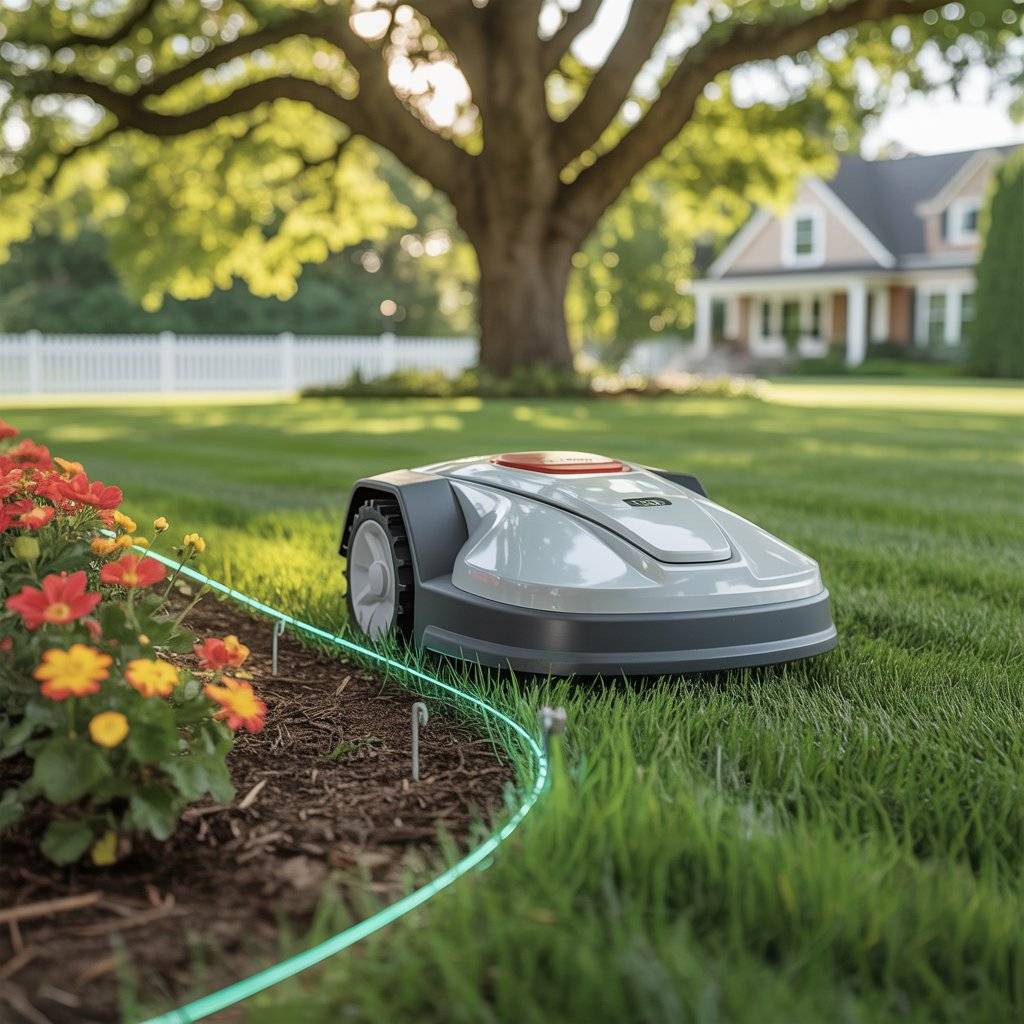
2. Wire-Free Robot Lawn Mowers (GPS or RTK-Based)
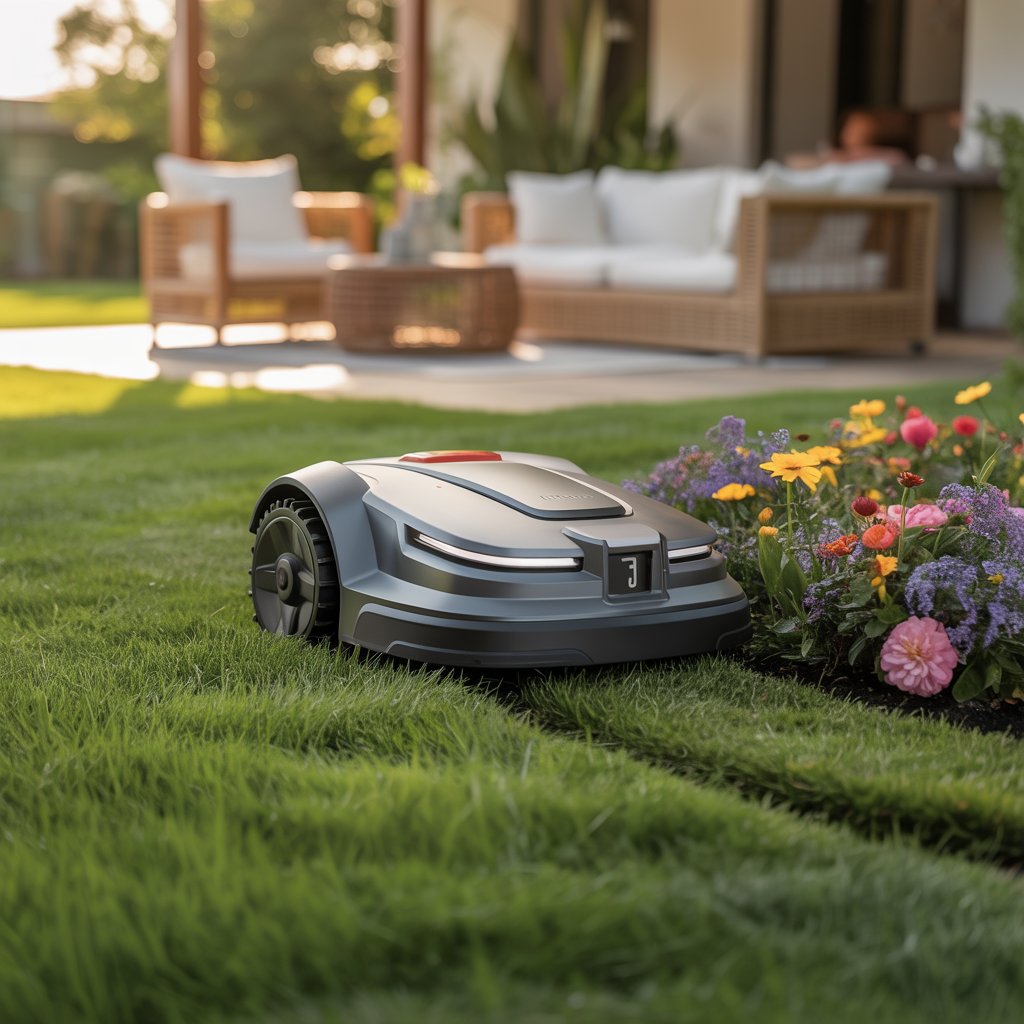
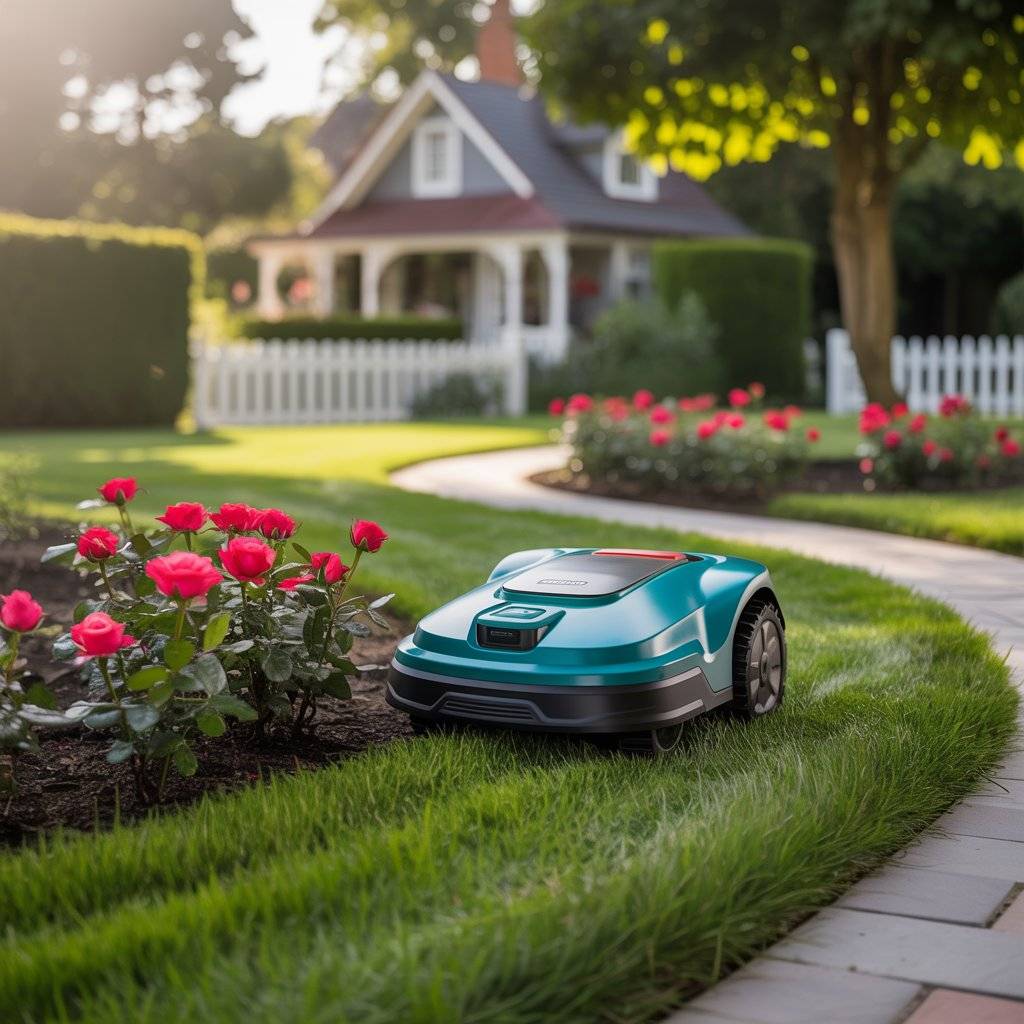
GPS and RTK robot mowers don’t need physical boundary wires. Instead, they use satellite signals to map your lawn and navigate where to cut. RTK (Real-Time Kinematic) GPS is especially precise sometimes within an inch.
This wire-free design makes setup easier and more flexible. You can change mowing zones from an app without digging or adjusting wires. These models are especially helpful for larger or more open spaces where wire installation would be difficult. However, they usually cost more and may need a strong GPS signal, which can be a challenge in yards with a lot of tree cover or tall buildings.
Wire-free models use satellite signals, not ground wires, to operate. RTK (Real-Time Kinematic) GPS adds accuracy for large or complex areas.
- Navigation: GPS maps the lawn, often within 1–2 inches of precision.
- Setup: No digging or wires just use the app to draw mowing zones.
- Customization: Easily update cutting areas or schedules remotely.
- Reliability: Performs best with clear sky access (may struggle under dense trees or near tall buildings).
These models are easier to set up but usually cost more upfront.
Best for:
✅ Large, open lawns
✅ Areas where boundary wires are hard to install
✅ Homeowners looking for flexibility and low setup hassle
- Wire-Free GPS/RTK Mower:
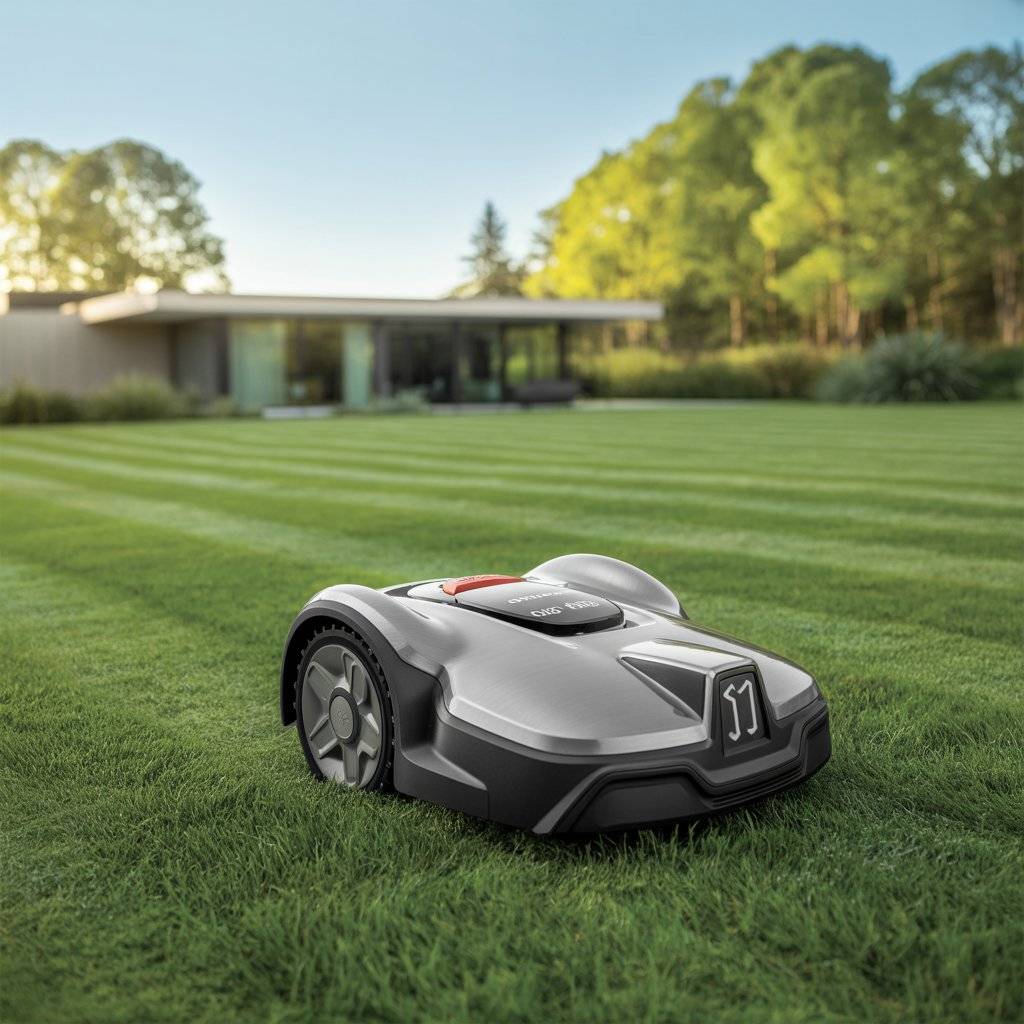
3. App-Controlled Smart Mowers
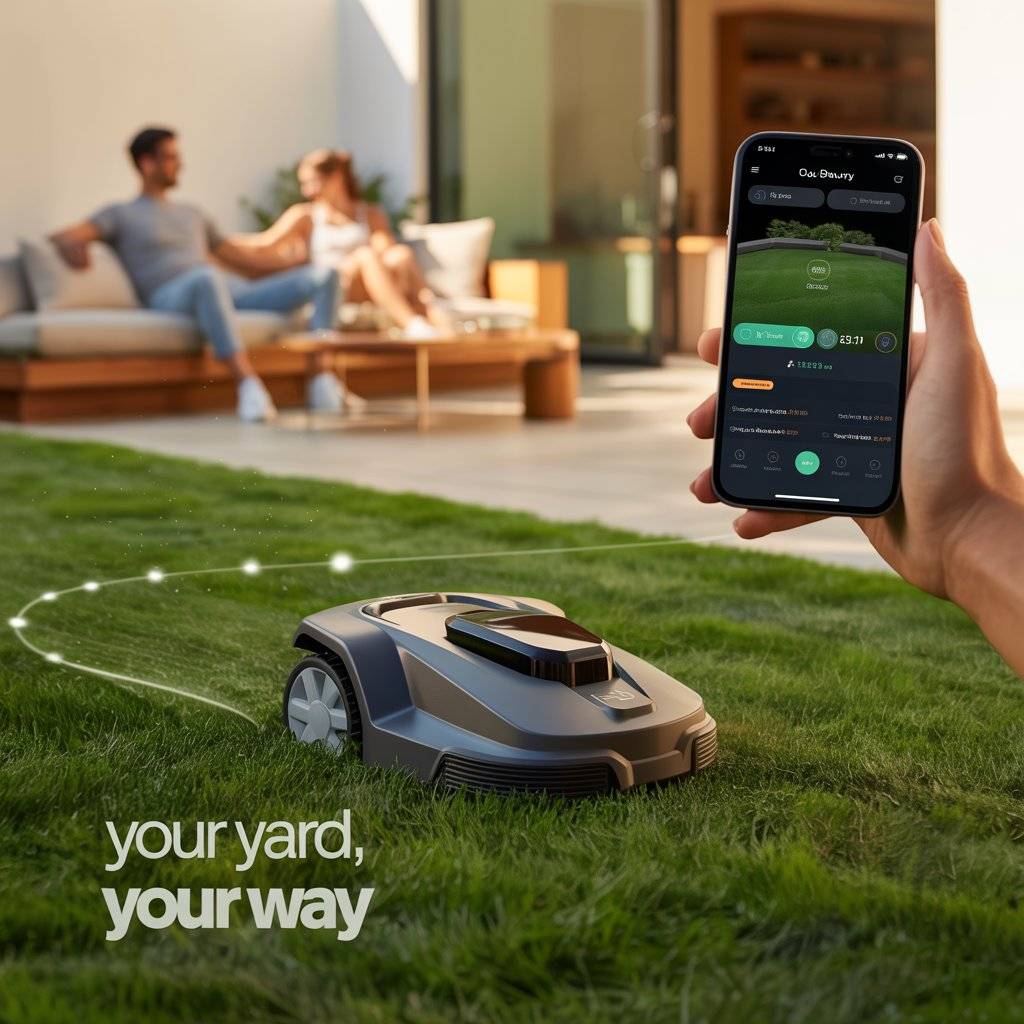
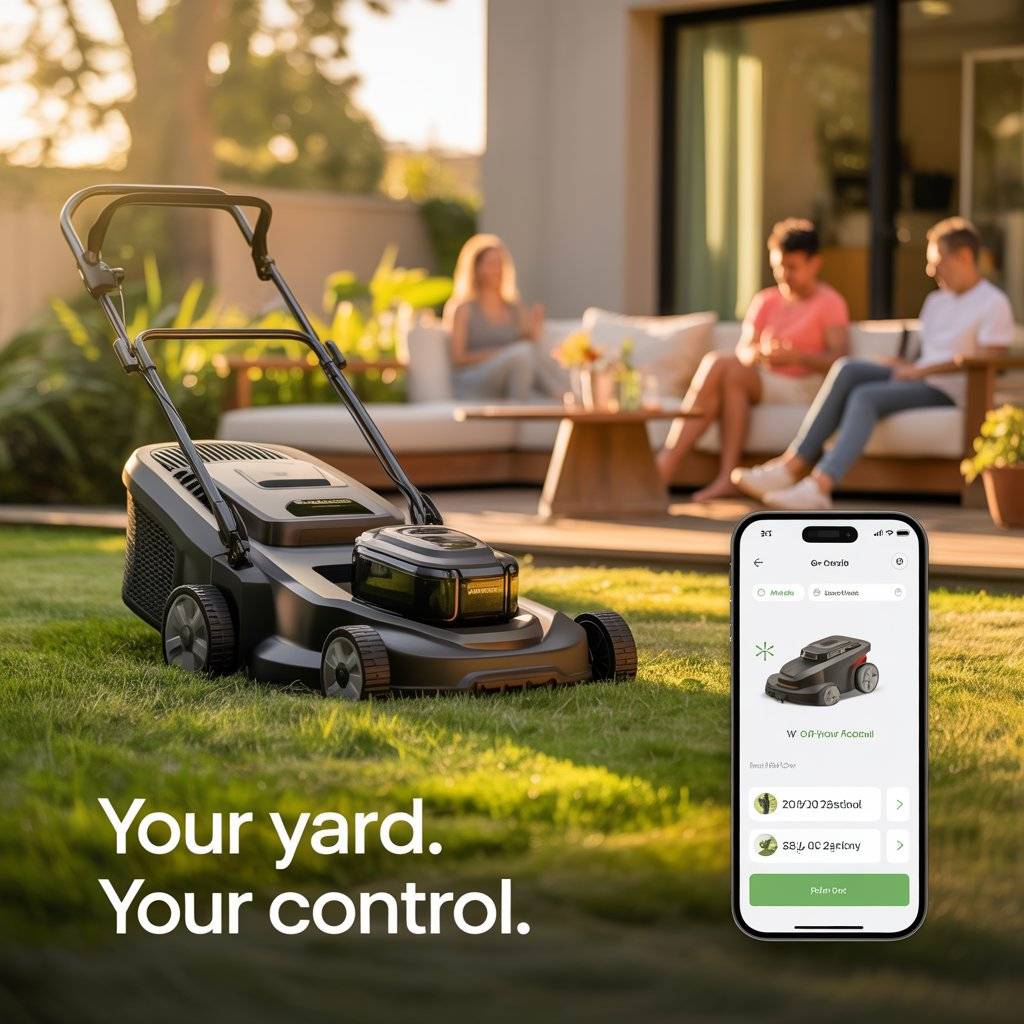
Smart robot mowers give you control through a smartphone app. You can schedule mowing times, check the mower’s location, and even send it back to the charging dock remotely. Many also offer updates and alert you to issues like a stuck wheel or a low battery.
Some models include rain sensors, multi-zone programming, and integration with smart home systems like Alexa or Google Assistant. These features make app-controlled mowers a solid option for busy people who want to manage yard care on the go.
App-connected mowers give you full control through your phone ideal if you travel often or want regular updates.
- Remote control: Start, pause, or send home from anywhere.
- Alerts: Notifications if the mower gets stuck, low on battery, or needs maintenance.
- Smart features: May include rain sensors, multi-zone scheduling, theft protection, and voice assistant compatibility.
- Security: Many include PIN codes or GPS tracking.
These mowers make routine lawn care feel less hands-on.
Best for:
✅ Tech-savvy users
✅ Small to mid-size lawns
✅ Families who want more control from their devices
- App-Controlled Smart Mower:
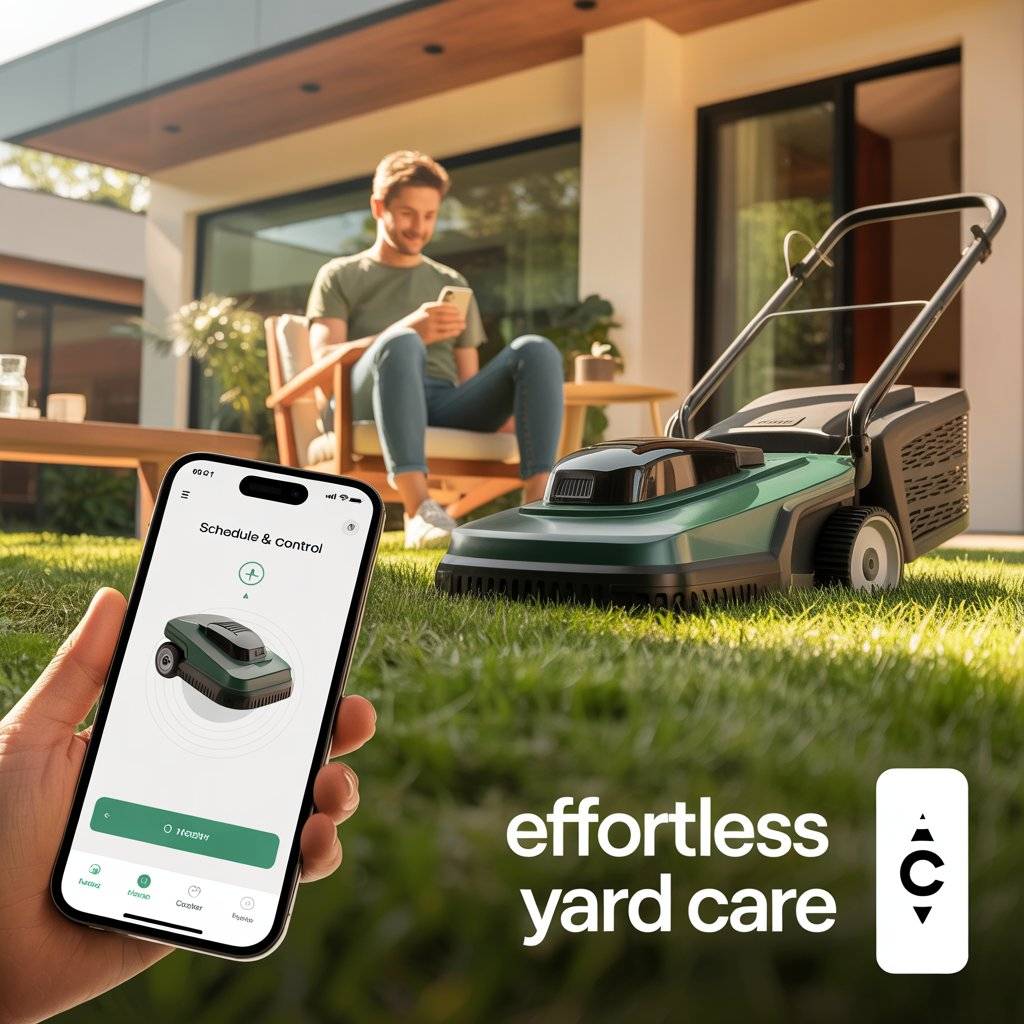
4. Multi-Zone Robot Lawn Mowers
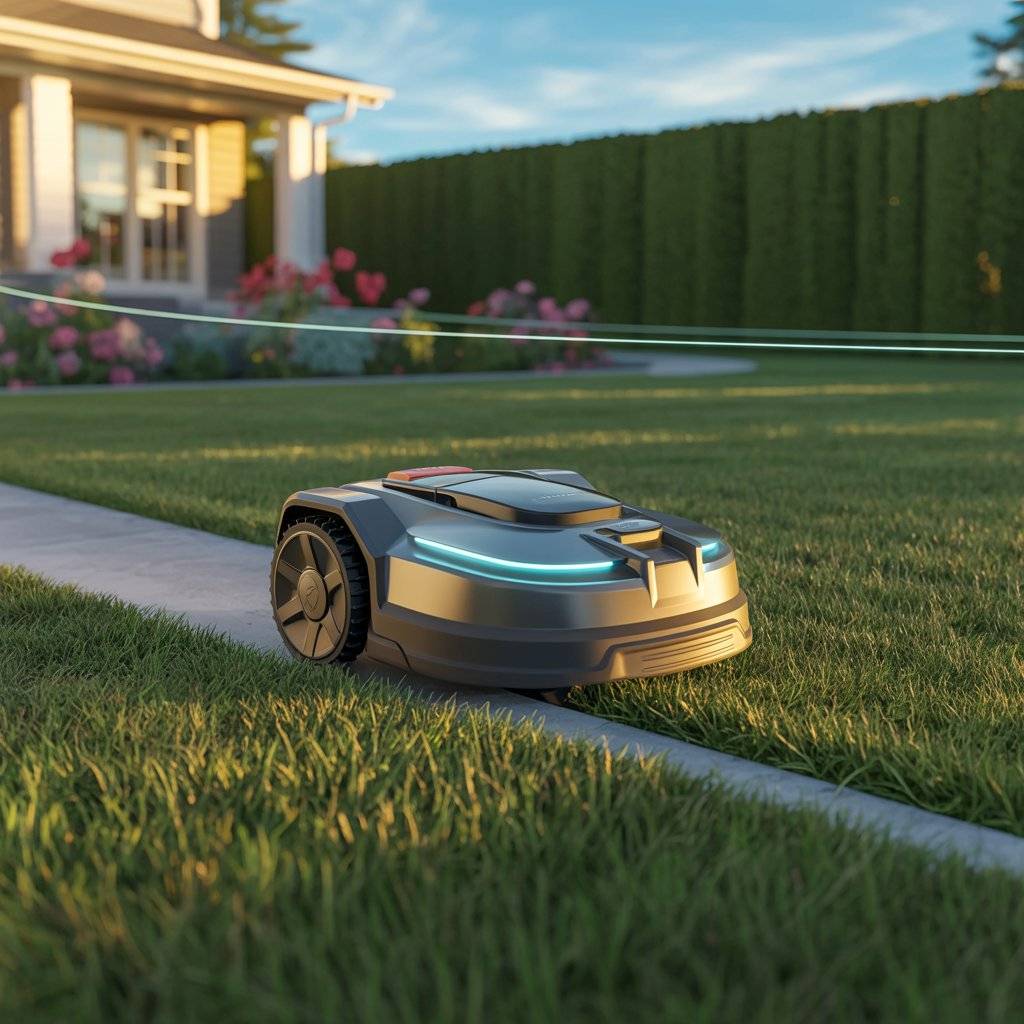
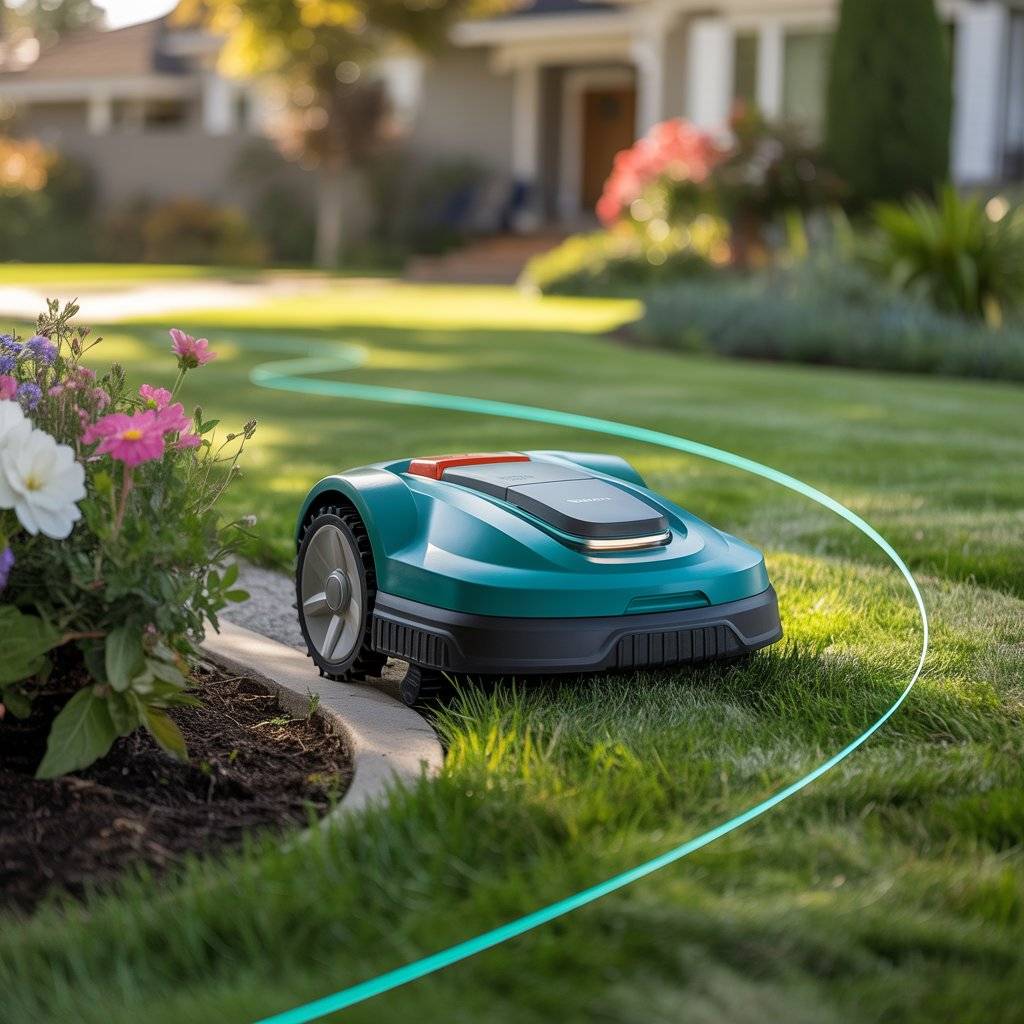
Related Post: Best Robot Lawn Mowers Ideas for Your Home
Not every lawn is one large open space. If you have a yard with several sections such as a front yard, a side strip, and a fenced backyard you’ll want a robot mower that can handle multiple zones. These mowers let you set up different areas to be mowed on different days or at different times.
Some use wires to guide the mower between zones, while others use GPS or Bluetooth-based navigation. The key benefit here is flexibility. You don’t have to move the mower manually; it knows where to go and when. It’s also useful if one part of your lawn grows faster than another due to sun or shade differences.
Yards with multiple sections can be tricky for standard robot mowers. Multi-zone models are designed to handle this.
- How it works: The mower travels between zones based on a programmed route or schedule.
- Zone setup: Can be set via app or through wired sections.
- Benefits: Keeps different areas of the lawn mowed based on their individual needs (sun/shade growth differences).
- Time-saving: No need to manually move the mower between front and back yard.
This type works especially well for properties divided by walkways, fences, or structures.
Best for:
✅ Yards split into front, back, or side sections
✅ Complex landscapes with pathways or slopes
✅ Owners who want full-lawn coverage without babysitting the mower
- Multi-Zone Compatible Mower:
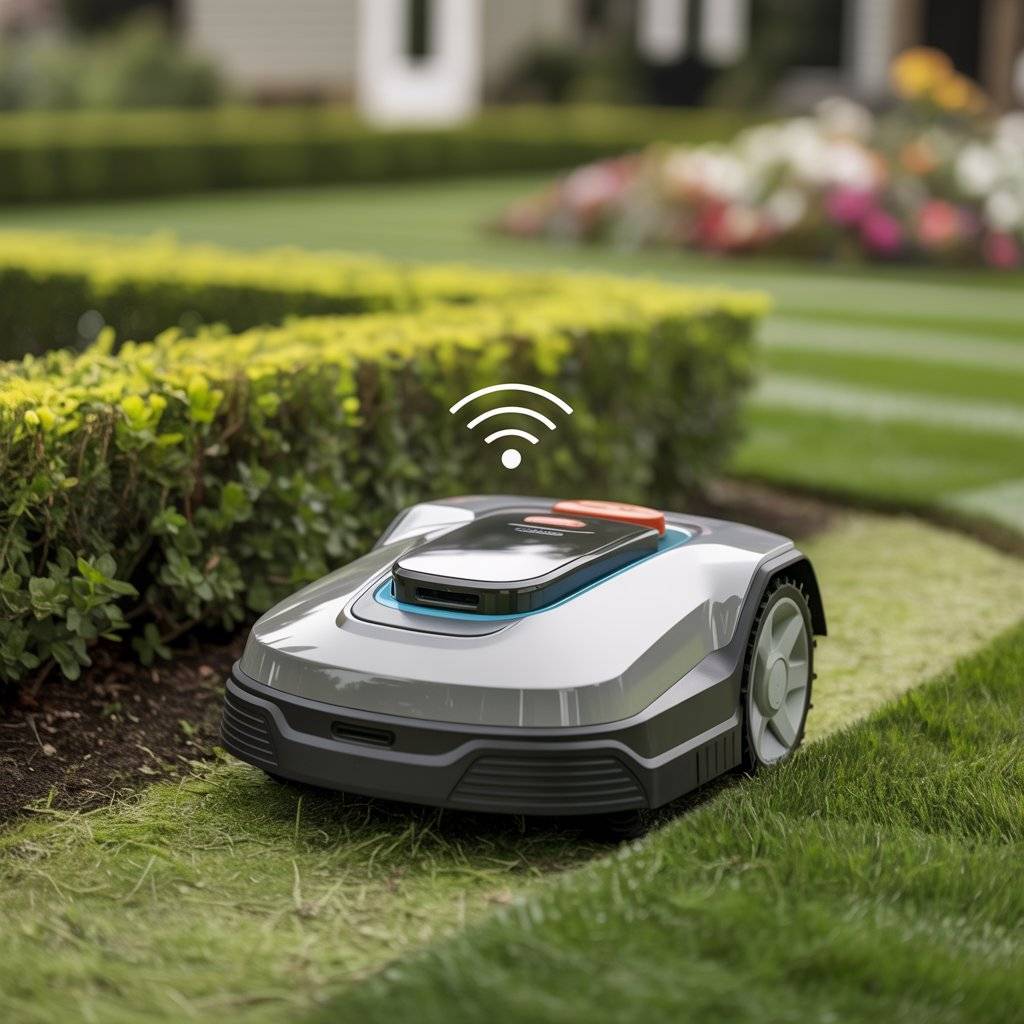
5. All-Terrain or Slope-Capable Robot Mowers

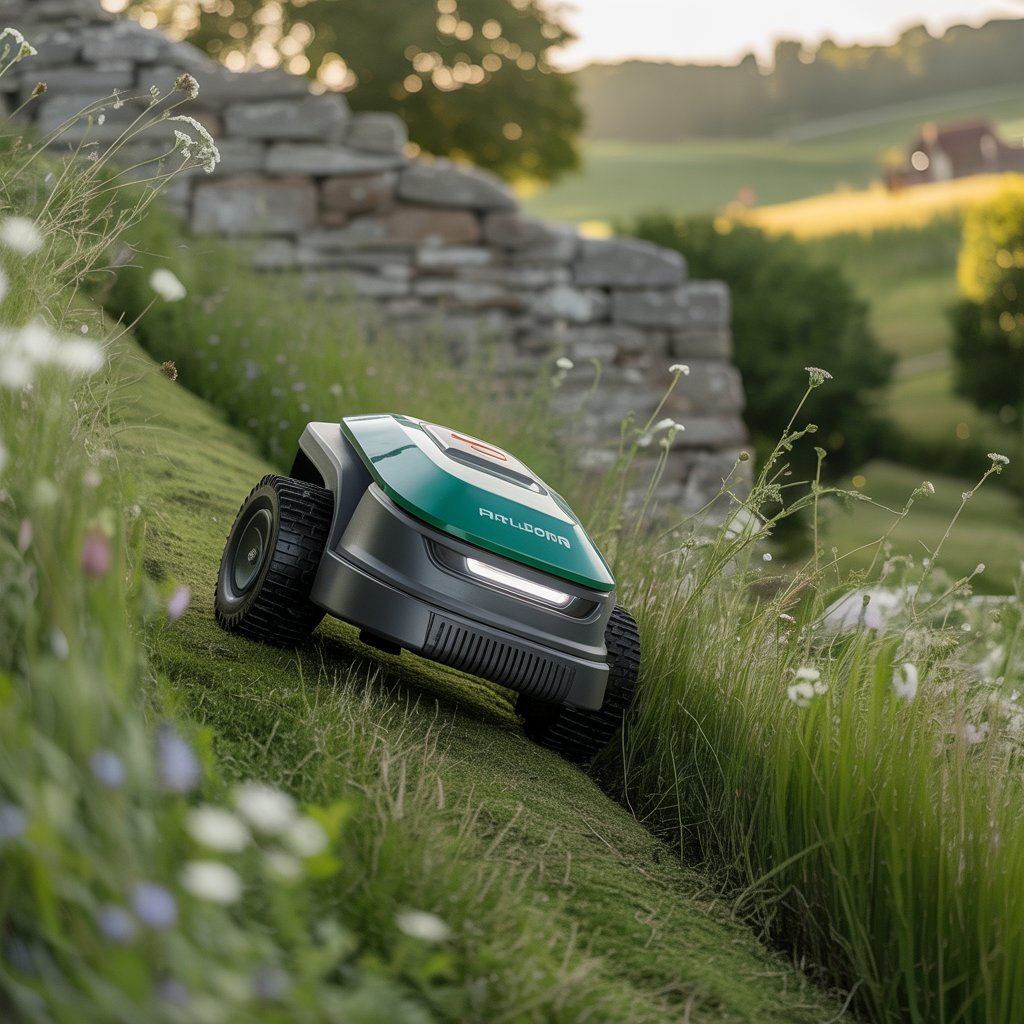
All-terrain robot lawn mowers are built to handle hills, uneven surfaces, and thicker grass types. These models usually have larger wheels, stronger motors, and better traction. Some can manage slopes as steep as 45%.
If your yard has bumps, hills, or uneven patches, a regular robot mower might get stuck or miss spots. All-terrain models are designed to stay stable and perform well even when the ground isn’t flat. They are especially good for rural areas or properties with natural terrain rather than level turf.
If your yard isn’t flat, you need a mower that can handle changes in elevation or rough ground.
- Design: Larger wheels and better traction systems keep the mower stable.
- Performance: Can climb slopes of 30–45%, depending on the model.
- Durability: Built tougher to handle rocks, roots, and uneven patches.
- Cutting power: Often better suited to thicker or longer grass types.
These models are built for challenges that standard mowers might struggle with.
Best for:
✅ Hilly or sloped yards
✅ Rural or natural landscapes
✅ Owners with thicker turf or rougher terrain
- All-Terrain or Slope Mower:
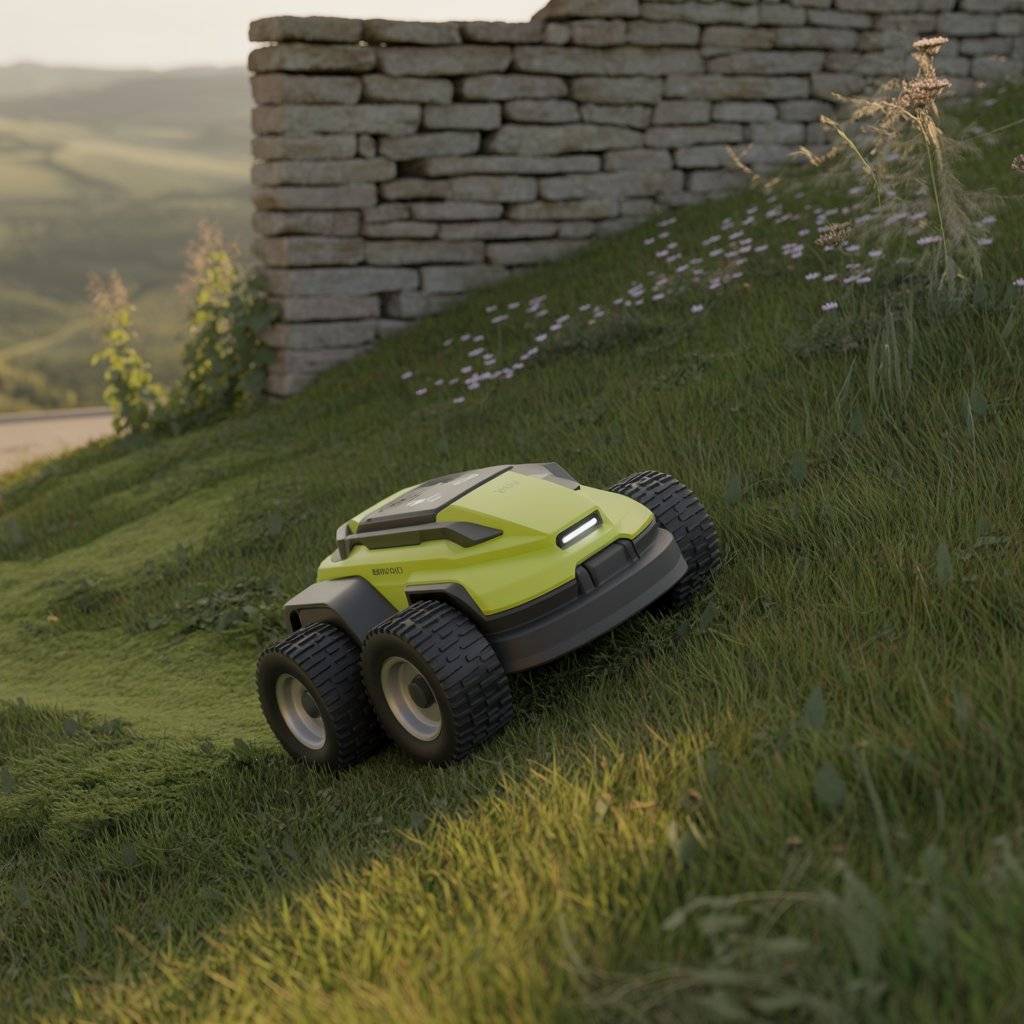
6. Solar-Assisted Robot Mowers (Rare)
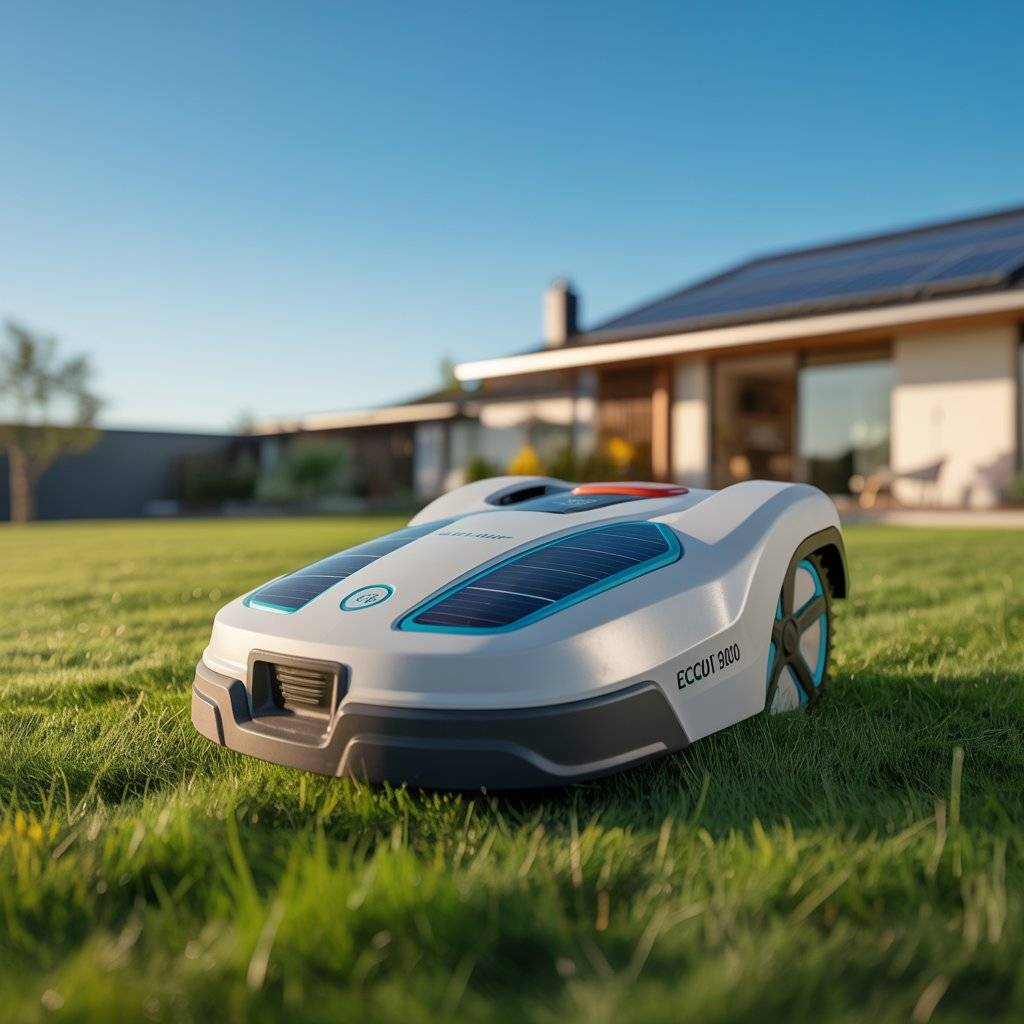
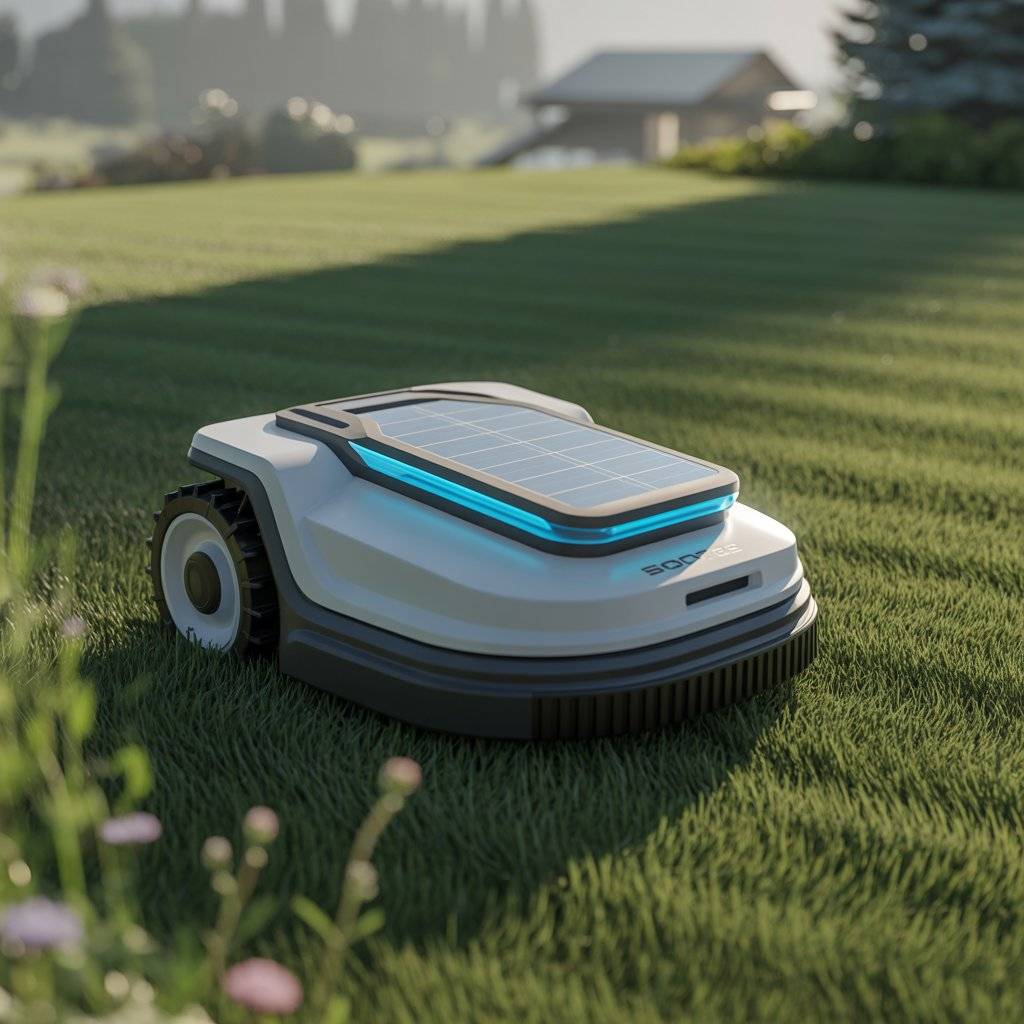
Solar-powered or solar-assisted robot mowers are still fairly rare but can be a helpful option in sunny climates. These mowers use built-in solar panels to extend their battery life or reduce the need to recharge as often.
While not fully solar-dependent (most still plug into a base), these models can help reduce electricity use slightly. They’re ideal for open lawns with plenty of sun exposure, and they align well with eco-friendly lifestyle choices. However, options are limited and may not be as advanced in navigation features compared to other types.
Solar-assisted models use solar panels to extend battery life and reduce charging needs. They’re still rare but growing in popularity among eco-conscious buyers.
- Power: Still plugs in but uses the sun to charge during mowing.
- Efficiency: Ideal for sunny, wide-open lawns.
- Limitations: Not ideal for shaded or cloudy regions; fewer models available.
- Upkeep: Panels need to be kept clean for best performance.
It’s not a fully solar solution yet, but it’s a helpful step toward greener lawn care.
Best for:
✅ Sunny locations
✅ People looking to reduce electricity use
✅ Smaller or medium lawns with full sun exposure
- Solar-Assisted Mower:
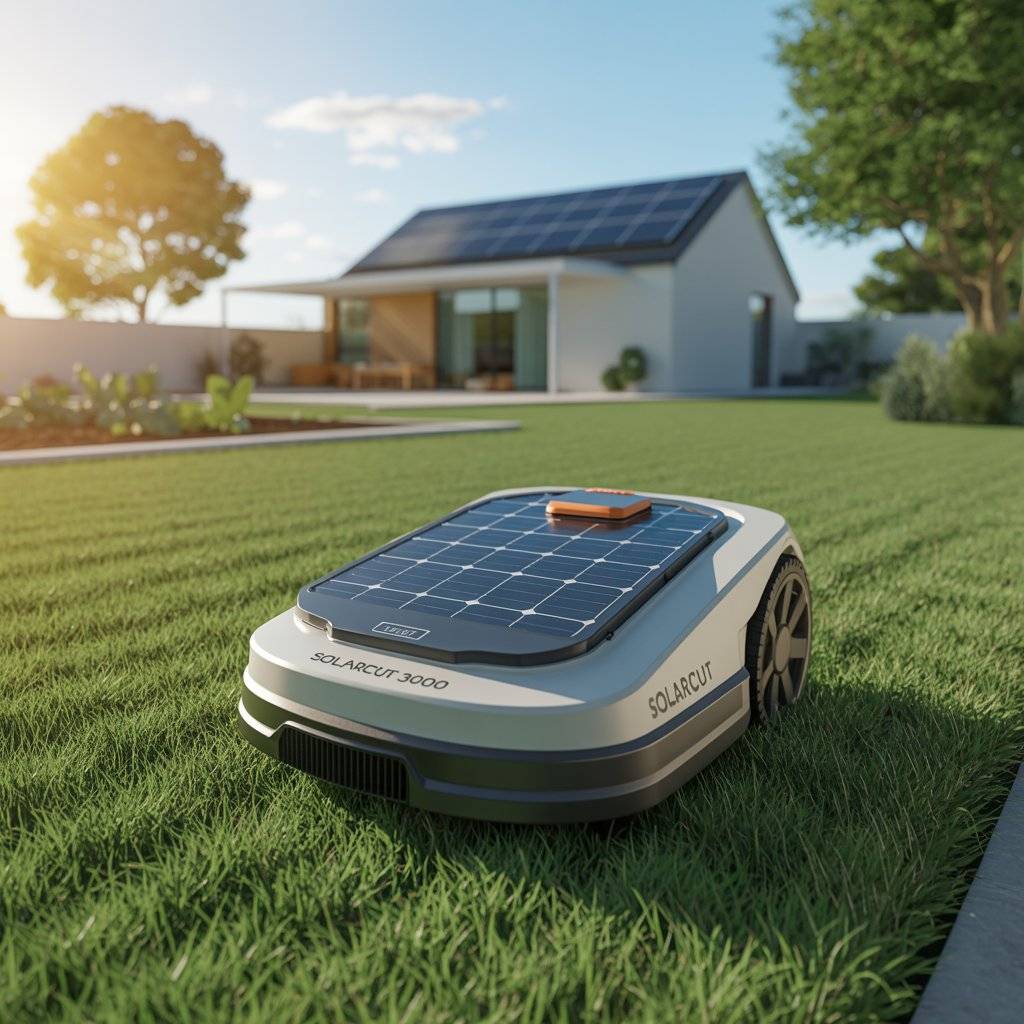
🔍 Quick Comparison Table: 6 Common Robot Lawn Mower Types
| Type | Best For | Needs Wire? | Handles Slopes? | Smart App Control? |
|---|---|---|---|---|
| Boundary Wire Mower | Simple, flat yards | ✅ Yes | ⚠️ Mild slopes only | ⚠️ Sometimes |
| Wire-Free GPS/RTK Mower | Large, open, or complex yards | ❌ No | ✅ Yes | ✅ Yes |
| App-Controlled Smart Mower | Tech-savvy homeowners | ⚠️ Some do | ⚠️ Varies | ✅ Yes |
| Multi-Zone Robot Mower | Yards with separate areas | ✅/❌ Depends | ✅ Some models | ✅ Yes |
| All-Terrain Robot Mower | Hilly, bumpy, or uneven lawns | ✅ Often | ✅ High inclines | ✅ Yes |
| Solar-Assisted Robot Mower | Sunny, eco-friendly setups | ✅ Often | ⚠️ Varies | ⚠️ Sometimes |
AFQs
❓ 1. Do robot lawn mowers work on uneven or sloped yards?
Yes, some robot lawn mowers are designed to handle slopes and rough terrain. Look for all-terrain or slope-capable models, which have stronger motors, grippy wheels, and better balance. These mowers can typically handle inclines of up to 30–45%, depending on the brand. If your yard has steep hills or rough patches, this type will give you better results than standard models.
❓ 2. Can I use a robot lawn mower without installing a boundary wire?
Yes, but only certain models support wire-free operation. These mowers use GPS or RTK technology to map your lawn and stay within set boundaries. While they’re more expensive, they eliminate the need to bury or maintain a physical wire. They’re best for open yards with clear satellite access.
❓ 3. How often does a robot lawn mower need to run?
Robot mowers are designed to cut a little bit of grass at a time, more frequently than a traditional mower. Most users run them 3 to 5 times a week, depending on how fast the grass grows. You can adjust the schedule in the app or settings to match your climate and grass type.
❓ 4. Are robot mowers safe around pets and kids?
Robot mowers are generally safe, as they use built-in sensors to detect objects and stop the blades when lifted or bumped. However, it’s still best to keep pets and small children away while the mower is running. Always check for safety features like tilt sensors, bump sensors, and emergency stop buttons before buying.
❓ 5. How do I maintain a robot lawn mower?
Maintenance is simple but important. Here’s what to keep an eye on:
- Clean the underside and wheels weekly to prevent grass buildup.
- Check blades monthly and replace them as needed.
- Inspect the boundary wire or GPS signal if it’s acting up.
- Update the app/software to keep it running smoothly.
Most mowers also self-charge, so just keep the docking station clean and dry.
Why I Wrote This Article
- To cut through the confusion.
With so many robot mowers on the market, it’s hard to know where to start. I wanted to create something straightforward just the facts, explained clearly.
- To give homeowners real answers.
You don’t need buzzwords. You need to know: Will this work on my lawn? How hard is it to install? That’s what I set out to answer.
- To help people make smart purchases.
Robot lawn mowers aren’t cheap. If you’re spending money on one, you deserve honest guidance on which type fits your yard and you’re routine.
- To make lawn care less stressful.
I know how draining yard work can be, especially when life’s already full. If the right mower can make your day a little easier, that’s worth sharing.
- To keep the advice human.
This article wasn’t written to impress machines it was written to help real people with real yards, busy days, and maybe a few weeds too.
✅ In Summary
Robot lawn mowers come in all shapes and styles from boundary wire basics to advanced GPS models. The best one for you depends on your yard’s size, shape, and how hands-on (or hands-off) you want to be. Here’s what we covered:
- Boundary wire mowers are solid and simple
- GPS/RTK models offer flexible, wire-free control
- Smart app mowers keep you in charge from your phone
- Multi-zone types handle complex or split-up yards
- All-terrain mowers thrive on hills and rough ground
- Solar-assisted mowers reduce charging and power use
🌿 Last Thought
When work in your Yard on weekend. With the right robot mower quietly doing its thing, you can reclaim your time whether that’s for reading on the porch, kicking a ball around with your kids, or just sitting still for a bit.
So take your time. Read the sections that speak to you. And when you’re ready, choose the mower that fits your space not just what’s trending.
Thanks for reading and may your grass stay short, your batteries stay charged, and your Saturdays stay yours. 🌼
- Back to School Made Easy: 18 Essential Products to Buy on Amazon - December 31, 2025
- 25 Things You Can Make and Sell This Year for Extra Income - December 31, 2025
- DIY Dog Corner Makeovers Using Pallets, Crates & Budget Friendly Decor - December 30, 2025

